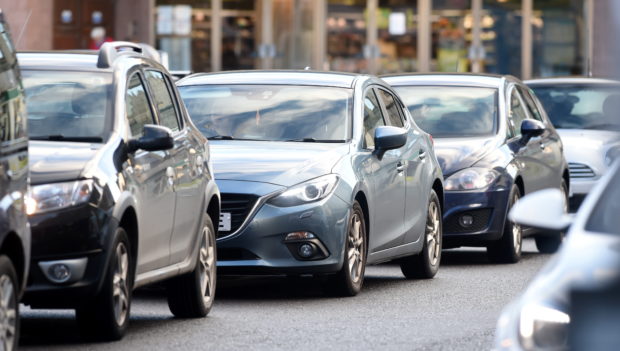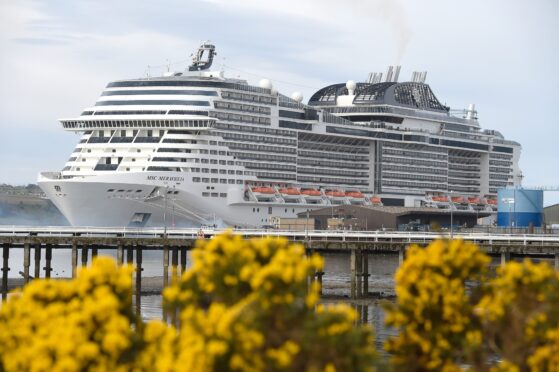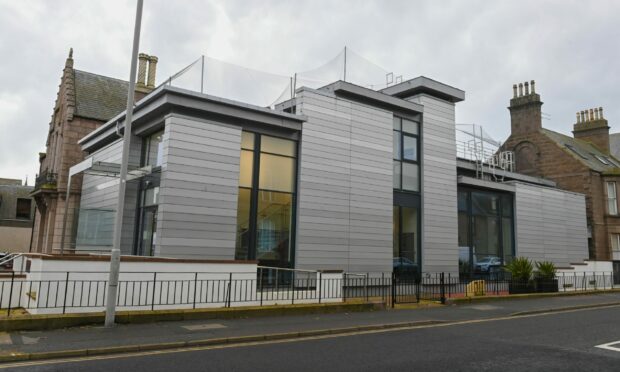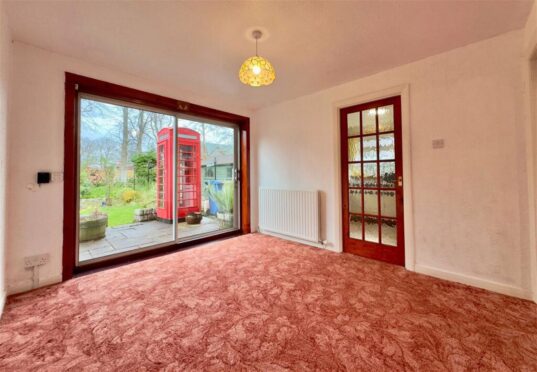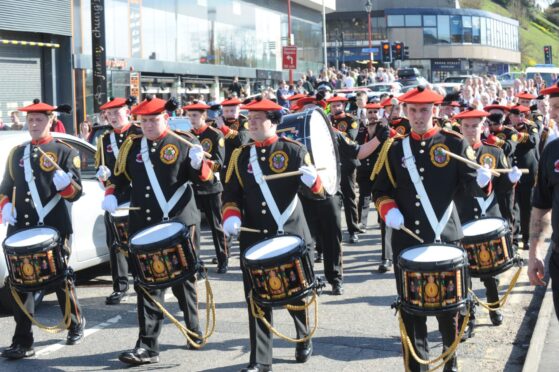Chiefs at Highland Council are working an action plan to address issues on Inverness’ Academy Street after it was found to be the fourth-worst in Scotland for toxic air pollution.
The prominent street, which runs through the centre of the Highland capital, was identified by Friends of the Earth Scotland as one of the top six offenders across the nation exceeding the legal level of nitrogen dioxide (NO2) in 2019.
It is the first time Academy Street has been included on the list and its presence has surprised many local leaders, including Mike Smith of Inverness Bid.
Council leaders will be working with an array of local partners to address issues on the street and the surrounding area.
Calls have already been made for improved public transport but those involved in the effort have admitted there are no easy answers.
The legal limit for NO2, as set out by the European Ambient Air Quality Directive, stands at 40 microgrammes per cubic metre – but 43.32 microgrammes have been recorded on Academy Street.
The figure represents a significant decrease in air quality compared to the previous year.
Friends of the Earth Scotland described the figure as “shameful” and a “step backwards for Inverness”, with local MP Drew Hendry calling for more ambition for plans being implemented by Highland Council.
Yesterday an authority spokesman said the figure was at odds with the region’s generally excellent air quality but promised efforts were being made to address problems.
YOUR VIEWS: Would you welcome measures to remove vehicles from Inverness City Centre?
He said: “Generally, air quality in the Highlands is very good.
“The ongoing work in local air quality management undertaken by Highland Council has, however, identified an area within Inverness city centre where annual mean nitrogen dioxide concentrations exceed the UK air quality strategy objective concentration of 40 microgrammes per cubic metre.
“The area which includes Academy Street is the subject of our air quality management area.
“We are working with partners in NHS Highland, HITRANS, Sepa, Inverness Bid and community council representatives on actions to improve air quality in the area.”
Air pollution has been linked to serious health conditions including asthma, heart attacks and strokes.
Mike Smith of Inverness Bid said: “This has come as quite a surprise but when looking towards the solutions we have to consider that the Highlands isn’t particularly good with our public transport offering.
“Of course we want more and more people to get out there walking and cycling but we have to realise that there are some constraints due to the size and operation that may mean it is not possible for everyone to ditch the car.”
The UK’s motorway city
Cities across Europe have faced similar issues, with efforts being made to address the challenges presented by toxic air pollution by enhancing infrastructure to encourage more environmentally friendly modes of transport.
The Belgian port city of Ghent has experienced a dramatic drop in the percentage of motor vehicles used for trips, falling from 55% to 27% following a shake-up in 2017 to deliver better walking and cycling routes and improving public transport.
Locals have reported those steps have made using the city centre a “fun and relatively stress-free experience”, helped reduce the number of accidents and created a quieter place in which to live.
They also claim it has allowed local businesses to flourish.
The success of the scheme in Belgium has encouraged others to look to its example, including city leaders in Birmingham – despite it being almost four times the size of Ghent.
England’s second city was one declared the UK’s motorway city, but efforts are now being made to encourage commuters out of the car and onto bikes and buses.
Cars will be forced to travel on a ring road to navigate around Birmingham, with active movers rewarded with simpler and safer routes right in the heart of the city.
Highland Council is proposing ideas to attempt to lower the levels of toxic NO2 with advice being offered to members of the public to help them make changes to their routines to reduce congestion.
The local authority is asking commuters to leave the car at home and those who drive to ensure they turn vehicle engines off while stationary.
It is also asking businesses to encourage their workers to use active modes of transport , such as cycling and walking, or make use of public transport.
